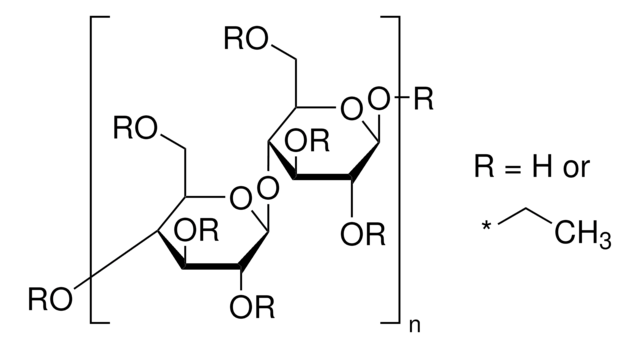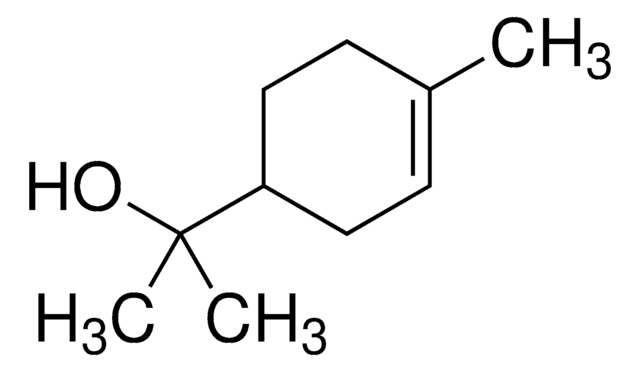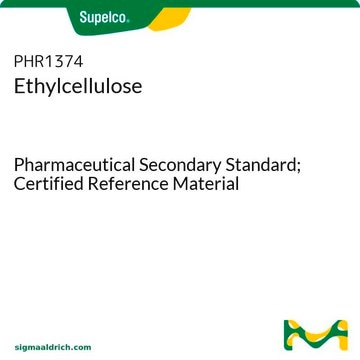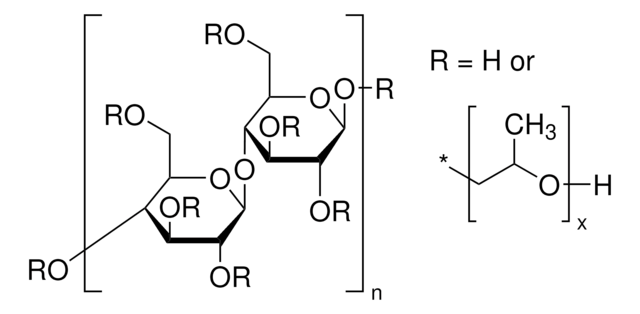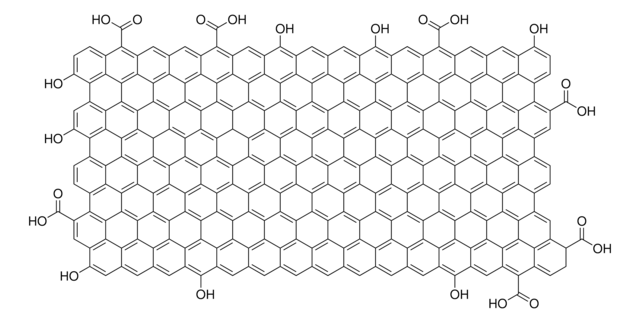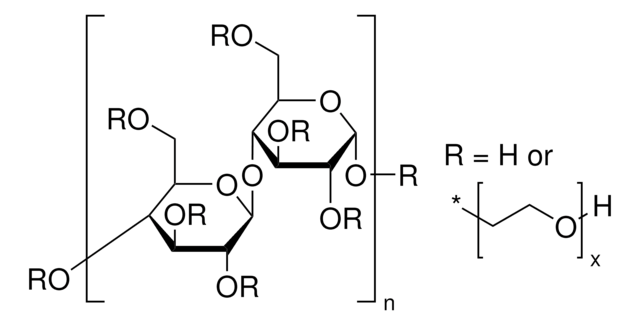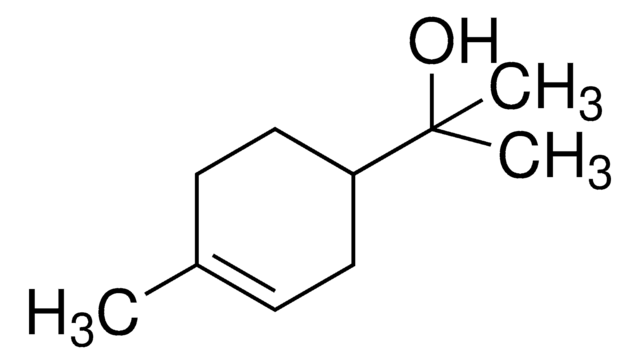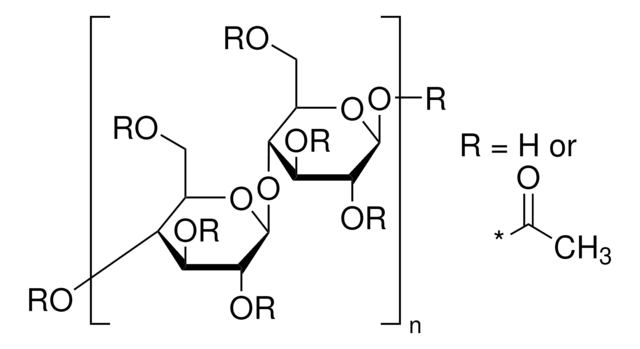433837
Ethyl cellulose
viscosity 46 cP, 5 % in toluene/ethanol 80:20(lit.), extent of labeling: 48% ethoxyl
Synonym(s):
Cellulose ethylate
About This Item
Recommended Products
description
water vapor transmission 890 g/m2/24hrs 3-mil. film (ASTM E96-66,E)
Quality Level
form
powder
autoignition temp.
698 °F
hardness
52-61 (Sward, 3-mil. film)
concentration
48.0-49.5%
extent of labeling
48% ethoxyl
2.25-2.58 mol ethyl per mol cellulose (D.S.)
refractive index
n20/D 1.47 (lit.)
viscosity
46 cP, 5 % in toluene/ethanol 80:20(lit.)
transition temp
Tg 120-124 °C
solubility
esters, aromatic hydrocarbons, alcohols and ketones: soluble
density
1.14 g/mL at 25 °C (lit.)
Looking for similar products? Visit Product Comparison Guide
Related Categories
Application
Features and Benefits
wgk_germany
WGK 1
flash_point_f
Not applicable
flash_point_c
Not applicable
ppe
Eyeshields, Gloves, type N95 (US)
Certificates of Analysis (COA)
Search for Certificates of Analysis (COA) by entering the products Lot/Batch Number. Lot and Batch Numbers can be found on a product’s label following the words ‘Lot’ or ‘Batch’.
Already Own This Product?
Find documentation for the products that you have recently purchased in the Document Library.
Customers Also Viewed
Our team of scientists has experience in all areas of research including Life Science, Material Science, Chemical Synthesis, Chromatography, Analytical and many others.
Contact Technical Service